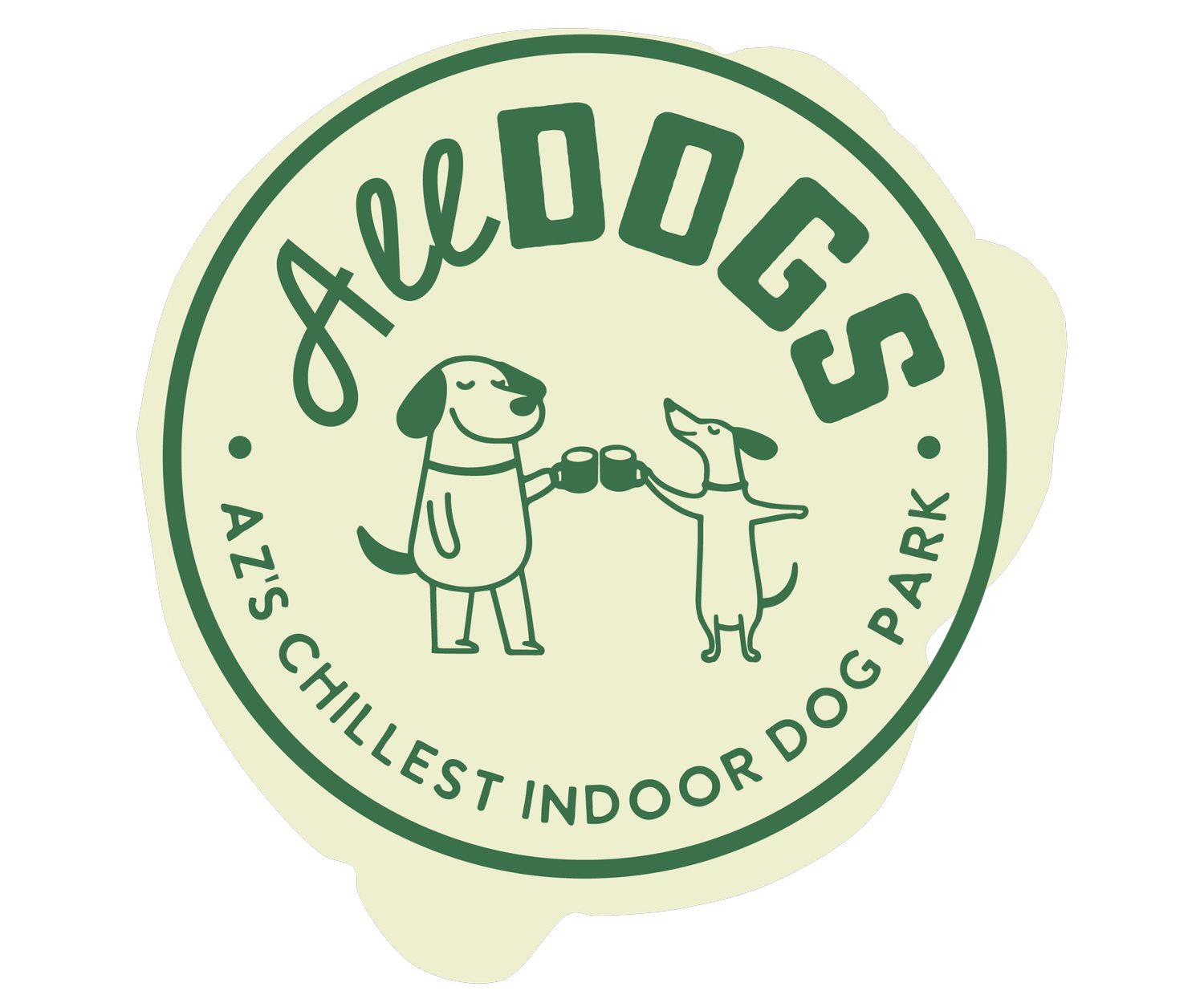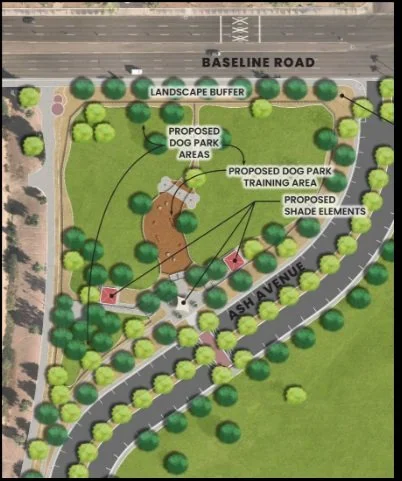Tempe's New Dog Park is a Step in the Right Direction... But not usable year round.
Tempe recently opened a new off-leash dog park at Kiwanis Park, featuring four play zones, agility equipment, a small dog area, a hydrant-style water feature, and a few metal shade structures. It’s a well-constructed addition to the city’s dog-friendly infrastructure, and it reflects an encouraging investment in public spaces that welcome both dogs and their owners.
However, since it’s May 2025 the dog park has remained relatively unused because But even with these amenities, a familiar issue remains: rising temperatures. In a climate like Tempe’s, where summer heat regularly reaches 110°F or more, outdoor dog parks become unusable for large parts of the year—unless they’re built specifically for thermal comfort.
Outdoor Dog Parks in Arizona: Built for Function, Not Comfort
The Kiwanis Dog Park has a lot going for it, especially compared to older parks that often lack agility features or any shade at all. But it still leaves out the most important factor for dog owners in the Valley: comfort during the summer months.
In Tempe and other parts of the Phoenix metro area, outdoor design must be climate-responsive. That means shaded seating areas, covered walkways, cooling elements for both dogs and people, and lighting that allows for safe, social use in the evenings.
Currently, Kiwanis Park includes two metal shade structures and several newly planted trees. Those trees will eventually offer relief, but not this year. And in the meantime, the park’s open layout offers little in the way of solar protection for either species.
What Would a Climate-Responsive Dog Park Look Like?
To make an outdoor dog park usable in extreme heat, cities like Tempe can incorporate cost-effective upgrades that shift the space from functional to truly welcoming.
These include:
Expanded shade sails or canopies over seating and play zones
Vertical shade walls using trellises or fast-growing vine structures along fencing
Comfortable, grouped seating with backs and built-in shade for longer stays
Drinking fountains and bottle refill stations for people, placed near dog water features
Misting poles or cooling zones triggered by motion or manual activation
Low, warm LED lighting to make the space usable after sunset
Public Spaces for Dogs Are Really Public Spaces for People
Dog parks serve an important role beyond recreation. They’re third spaces—informal public places where community ties form through casual, repeated interaction. But for that to happen, people have to stay longer than a quick loop around the fence. And staying means they need somewhere comfortable to sit, shade from the sun, and the option to visit outside peak heat hours.
This isn’t just about dogs. It’s about the design of civic life.
A Step Forward And an Invitation to Go Further
Tempe should be proud of its new dog park at Kiwanis. It offers a better baseline for what a public dog space can be. But it also invites a broader conversation about what’s needed to make dog parks truly usable, inclusive, and resilient in a region where heat is not a seasonal inconvenience, but a structural reality. Since it’s opening the reception to the park has largely been positive. However, the google reviews note that the lack of shade is a problem for their dogs and the owners.
At All Dogs, we’re building an indoor dog park in Tempe because we believe dog-friendly design needs to meet the needs of real people and real pets in a changing climate. But we also support outdoor dog parks—and we believe with smarter planning, they can become vital social spaces that build community year-round.
Final Thought: Designing for Year-Round Use Is Designing for Real Life
Dog parks should do more than meet the minimum. They should invite you to stay, connect, and return. That requires designing for the actual climate we live in, not the one we wish we had.

